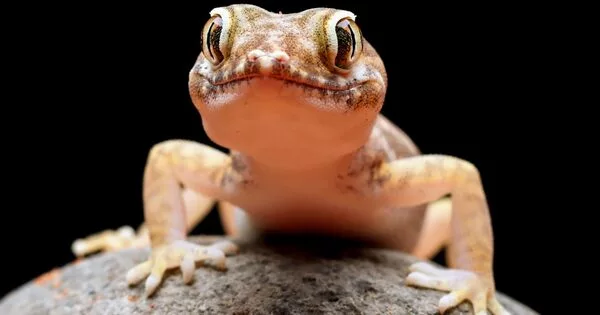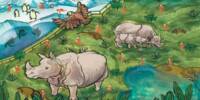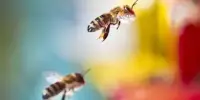The leopard gecko, also known as the common leopard gecko, is a ground-dwelling lizard native to Afghanistan, Iran, Pakistan, India, and Nepal’s rocky dry grassland and desert regions. The leopard gecko has become a popular pet, and it is sometimes referred to as the first domesticated species of lizard due to extensive captive breeding.
Eublepharis pictus, also known as the Painted Leopard Gecko, lives deep in the forests of Odisha and Andhra Pradesh in India. It is a colorful gecko species that has only recently revealed its true identity. The Painted Leopard Gecko, which was previously confused with a similar species, is already on the verge of extinction because it is being collected for the pet trade and may even be smuggled illegally.
Deep in the forests of Odisha and Andhra Pradesh in India lives a colourful gecko species that only now revealed its true identity. Meet Eublepharis pictus, also known as the Painted Leopard Gecko.
During a field survey in Vishakhapatnam, Andhra Pradesh, researchers Zeeshan A. Mirza of the National Centre for Biological Sciences in Bangalore and C. Gnaneswar of the Madras Crocodile Bank Trust in Chennai discovered a gecko in a water tank near a temple. They identified it as an East Indian Leopard Gecko species back then (Eublepharis hardwickii).
These lizards have conserved morphologies and most species are quite similar in general appearance. With a few characters based on the number of specimens examined, we described the species and named it the Painted Leopard Gecko – in Latin, Eublepharis pictus, for its colouration.
Zeeshan Mirza
“The species appears to be common in the hill forests,” Zeeshan Mirza explains, “but its distinctness was only confirmed by other researchers.”
The gecko is found throughout Western India, including the Western Ghats (northern Karnataka and parts of Maharashtra) and Gujarat. It is possible that it will occur in Pakistan. It is found in densely forested hill tracts, scrub, boulders, and scrubland. It is a terrestrial gecko that lives at night and feeds on scorpions and other arthropods.
The researchers discovered that what had previously been considered a southern population of East Indian Leopard Geckom might be distinct enough to represent a new species in a phylogenetic study in which they looked for the evolutionary history and relationships within and between the leopard gecko species in the genus Eublepharis.
Once they had molecular data they could work with, the team made morphological comparisons between the species, looking at specimens across natural history museums.

“These lizards have conserved morphologies and most species are quite similar in general appearance,” Zeeshan Mirza elaborates. “With a few characters based on the number of specimens examined, we described the species and named it the Painted Leopard Gecko — in Latin, Eublepharis pictus, for its colouration.” They published their discovery in the open-access scientific journal Evolutionary Systematics.
With this new addition, the gecko genus Eublepharis now contains 7 species. Two of them — E. pictus and E. satpuraensis – were described by Zeeshan Mirza.
The Painted Leopard Gecko is 11.7 cm long, which is quite large for a leopard gecko. The Brahmani River, which runs through the Eastern Ghats, separates it from the East Indian Leopard Gecko, with which it shares many characteristics.
The new species can be found in dry evergreen forests with scrub and meadows. It is strictly nocturnal, active foraging along forest trails after dusk. It has been observed licking surfaces as it moves while looking for food, implying that it may use its tongue as a sensory organ.
Even though the Painted Leopard Gecko seems to be widespread across the state of Odisha and northern Andhra Pradesh, researchers worry about its conservation. “The species is collected for the pet trade and even now may be smuggled illegally,” they write in their paper, which is why they refrain from giving out the exact locations where it may be found.
The authors believe that if more people knew the species was actually harmless, it would have a better chance against humans. To protect it, they recommend listing it as Near Threatened using IUCN conservation prioritisation criteria until more information about the size of its population is available.
Further research may also encourage better biodiversity protection in the area. “The Eastern Ghats are severely under-surveyed,” the authors conclude, “and dedicated efforts will help recognize it as a biodiversity hotspot.”
















